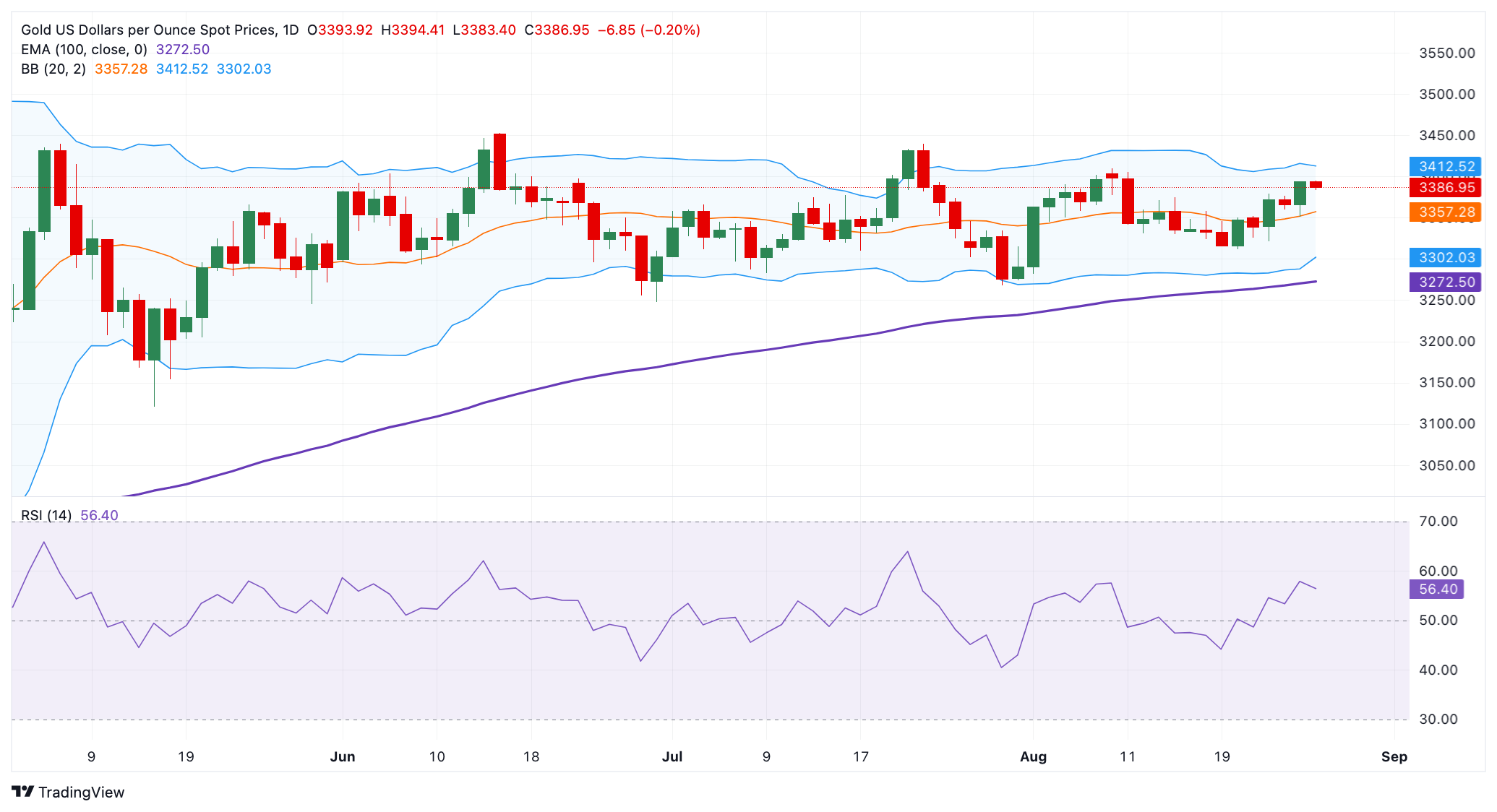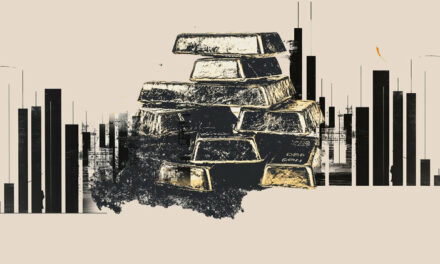- Gold price drifts lower in Wednesday’s Asian session.
- Worries over the Fed’s independence might support the Gold price.
- Traders await the US July PCE inflation report later on Friday for fresh impetus.
The Gold price (XAU/USD) trades on a negative note during the Asian trading hours on Wednesday. The precious metal retreats from a two-week high of $3,395 amid the profit-taking and modest rebound in the US Dollar (USD). The potential downside for the yellow metal might be capped amid concerns over the US Federal Reserve’s (Fed) independence as US President Donald Trump doubled down on his efforts to oust a Fed governor. This could boost the Gold price as it is considered a traditional safe-haven asset.
Traders will keep an eye on the Russia-Ukraine conflict. Any signs of escalating tensions might lift the Gold price, while a peace deal could undermine the precious metal in the near term. Gold traders brace for the US Personal Consumption Expenditures (PCE) Price Index report for July later on Friday. The headline PCE is expected to show an increase of 2.6% YoY in July, while the core PCE is projected to show a rise of 2.9% YoY during the same report period. The hotter-than-expected inflation could limit the Fed’s ability to lower rates.
Daily Digest Market Movers: Gold price loses traction despite concerns about the future of Fed independence
- Donald Trump said on Tuesday that he will soon have a “majority” of his own nominees on the Fed board of governors who will back his desire to cut the interest rates.
- In response, Fed Governor Lisa Cook said Trump has no authority to fire her from the central bank, and she will not resign.
- Trump said he was ready for a legal fight with Cook after he moved to oust her from her post following allegations that she falsified mortgage documents, per Bloomberg.
- “Overnight you had the news that Trump fired one of the Fed governors accused of mortgage fraud. It gave a little life to gold because the Fed’s kind of been the driver in gold right now,” said RJO Futures market strategist Bob Haberkorn.
- Last week, Fed Chair Jerome Powell signalled a possible interest rate cut at the US central bank’s meeting in September, saying that risks to the job market were rising.
- Traders are now pricing in nearly an 85% chance for a cut of at least a quarter-point at the Fed’s September meeting, up from 75% last week, according to the CME FedWatch tool.
Gold clings to a bullish stance in the longer term despite profit-taking
The Gold price edges lower on the day. Technically, the constructive outlook of the precious metal remains in play, with the price holding above the key 100-day Exponential Moving Average (EMA) on the daily chart. The path of least resistance is to the upside, as the 14-day Relative Strength Index (RSI) stands above the midline near 56.80. This indicates bullish momentum in the near term.
The crucial resistance level for Gold emerges in the $3,400-3,410 zone, representing the psychological level, the upper boundary of the Bollinger Band, and the high of August 8. A run of green candles and steady trading above the mentioned level could open the door for a move toward $3,439, the high of July 23. The additional upside filter to watch is $3,500, the round figure, and the high of April 22.
On the flip side, if the XAU/USD continues to draw in sellers and more red candlesticks show up, the price could head right back to $3,325, the low of August 21. Sustained trading below this level could expose $3,200, the lower limit of the Bollinger Band and round mark.

Fed FAQs
Monetary policy in the US is shaped by the Federal Reserve (Fed). The Fed has two mandates: to achieve price stability and foster full employment. Its primary tool to achieve these goals is by adjusting interest rates.
When prices are rising too quickly and inflation is above the Fed’s 2% target, it raises interest rates, increasing borrowing costs throughout the economy. This results in a stronger US Dollar (USD) as it makes the US a more attractive place for international investors to park their money.
When inflation falls below 2% or the Unemployment Rate is too high, the Fed may lower interest rates to encourage borrowing, which weighs on the Greenback.
The Federal Reserve (Fed) holds eight policy meetings a year, where the Federal Open Market Committee (FOMC) assesses economic conditions and makes monetary policy decisions.
The FOMC is attended by twelve Fed officials – the seven members of the Board of Governors, the president of the Federal Reserve Bank of New York, and four of the remaining eleven regional Reserve Bank presidents, who serve one-year terms on a rotating basis.
In extreme situations, the Federal Reserve may resort to a policy named Quantitative Easing (QE). QE is the process by which the Fed substantially increases the flow of credit in a stuck financial system.
It is a non-standard policy measure used during crises or when inflation is extremely low. It was the Fed’s weapon of choice during the Great Financial Crisis in 2008. It involves the Fed printing more Dollars and using them to buy high grade bonds from financial institutions. QE usually weakens the US Dollar.
Quantitative tightening (QT) is the reverse process of QE, whereby the Federal Reserve stops buying bonds from financial institutions and does not reinvest the principal from the bonds it holds maturing, to purchase new bonds. It is usually positive for the value of the US Dollar.







